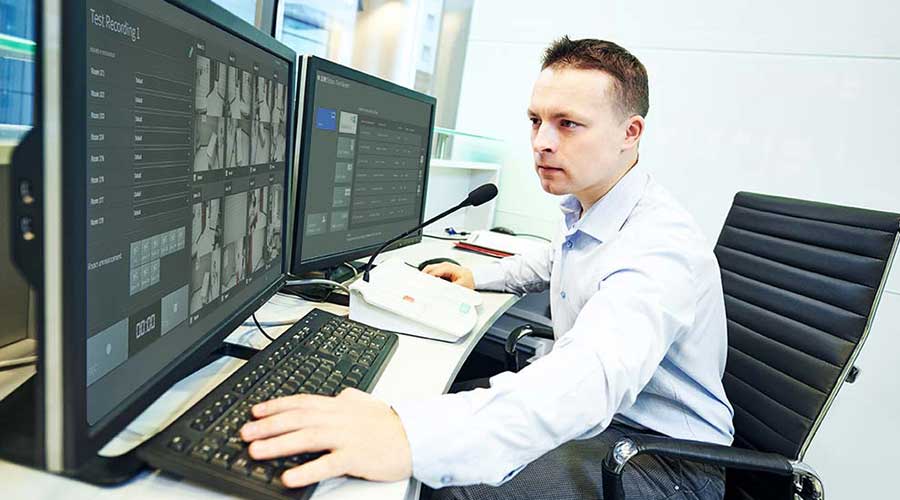
6 Ways to Lessen Distractions in the Control Room
ORGANIZED CONTROL ROOMS
We invite you to read Lessening Distractions in the Control Room before you begin reading this section. It is an introduction to the challenge for the simulationist in regard to cognitive load. This article begins a discussion on the types of technologies that will help address these challenges.
Lessening Distractions in the Control Room assumes that you as the reader has experience with the typical control room. The reality is that each simulation program may have the control room layout designed differently. Allow us to provide a little more context for those of you who don’t have a control room.
CHALLENGES IN DESIGNING A CONTROL ROOM
A control room will have at least one control station and may even have half a dozen or more. Some simulation programs have distributed control rooms that are placed in proximity to one or more simulation training rooms. A central control room that hosts all the control stations has a huge benefit in terms of facility infrastructure design (easy access to power, network, collaboration, support). However, some prefer having a one-way glass placed between the control room and the simulation training rooms so that even without an AV solution, the operator/facilitator can see what is happening in the training room. However, the reliance on glass (one way or otherwise) to see into the room also creates new challenges. If the light is too bright in the control room, learners/participants can see movement, and sometimes can clearly see people in the control room, thus creating some distraction to learners and consequently to staff. Other simulation facilities with this setup struggle to see past reflections and glares on the glass. To reduce glare, or transparency, some have decided to turn lights off in the control room altogether, with no light except for the light from the computer monitors. Collaboration, note taking, and even control may be sacrificed or hampered without appropriate lighting. So, what does facility design have to do with “cognitive load”? In part one, we covered the types of distractions and load that a facilitator/operator has to face, and this did not even take into consideration the environment in which the simulator and AV system is being controlled. Removal of distractions in the environment are important, if not critical.
CONTROL ROOM DISTRACTIONS & SOLUTIONS
Clutter: The control room and consequently, each control station should be free of clutter. Clutter could include loose papers, notes (not being used), unmanaged cables (network, power, USB, etc.)
- Solution: each operator/facilitator should pick up after themselves and leave their station clean at the end of each session. Cables should be managed so that feet do not get tangled in them, or that counter/desktops stay neat and tidy.
Complex station design where multiple keyboards, pointing devices have inconsistencies between one control station and another, requiring operators to learn the uniqueness of each station.
- Solution: standardize each control station as much as possible. Use same branding monitors and computers and input devices (keyboard, mouse, microphone, etc.). The operator/facilitator should not have to relearn how to use the hardware (and software,if possible) just by changing to a different station. Each station is typically dedicated to a single simulation training space, but different manikin models and brands may be swapped out between each one. As much as it is possible, each control station can operate any manikin owned in any of these spaces.
- Solution 2: When multiple computers are required for a control station, reduce multiple keyboards and mice to a single keyboard and mouse by using a KM switch. Switching control between computers can be as easy as moving your mouse pointer from one monitor screen to an adjacent monitor. Adder and Avocent both offer a command and control type KM (where KM = Keyboard, Mouse) switch. These switches can support up to four computers. Avocent has a switch that is smaller where only two computers are needed, and that will save some money.
- Solution 3: As much as possible, each computer should have the same version of operating system and the computer should only have software related to simulation control. Some staff members use control station computers to do their office work and sometimes install software, or plugins for the browser. This has a strong potential to create instability with the simulation control and AV software. Control Stations should only be used for control.
Speakers from different control stations being used where sound is blaring from one scenario and distracting other operators/facilitators in the control room.
- Solution: Use headphones when other operators are in the same room and more than one scenario is being controlled. When entering the control room be discreet and considerate that your activity does not add to the cognitive load already bearing down on the facilitator/operator.
- Solution 2: If still designing your center, and the layout of your facility supports it, use a distributed control room model, where each simulation training room has one control station in its own control room. These are smaller rooms, but you will have greater freedom to control what is happening in the space if it isn’t shared with other facilitators like a central control room. However, this does create challenges as well. There are advantages to both distributed and central control room facility design. Consider how you will use the space.
Next Steps
Do you have a challenge you would like addressed? Reach out to one of our healthcare professionals here or chat with us below!

